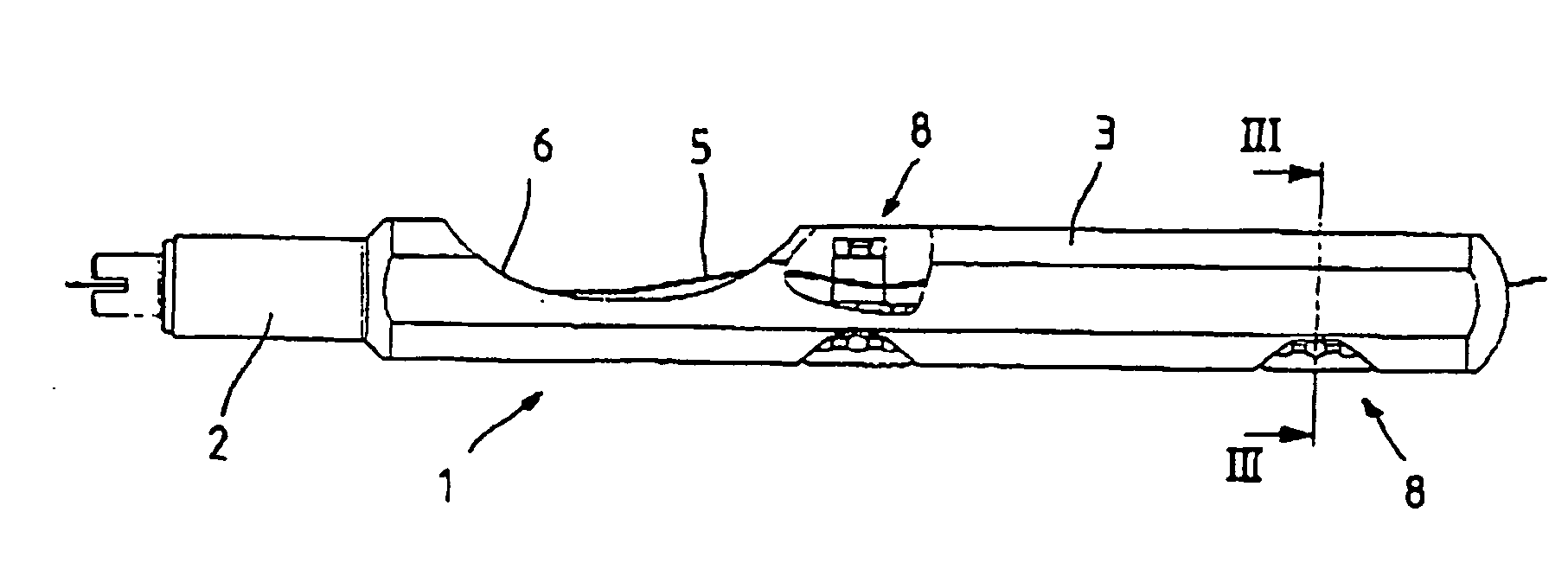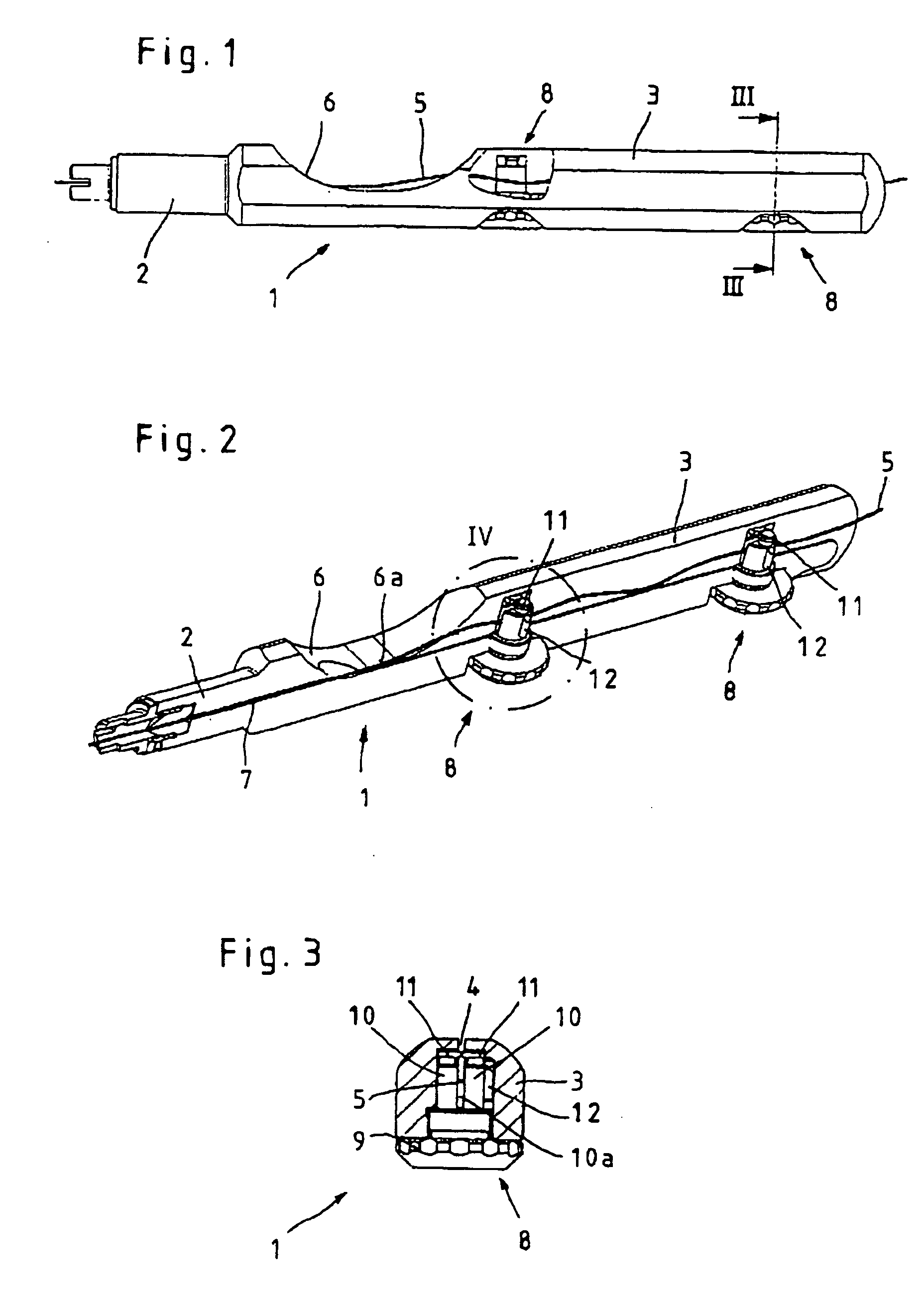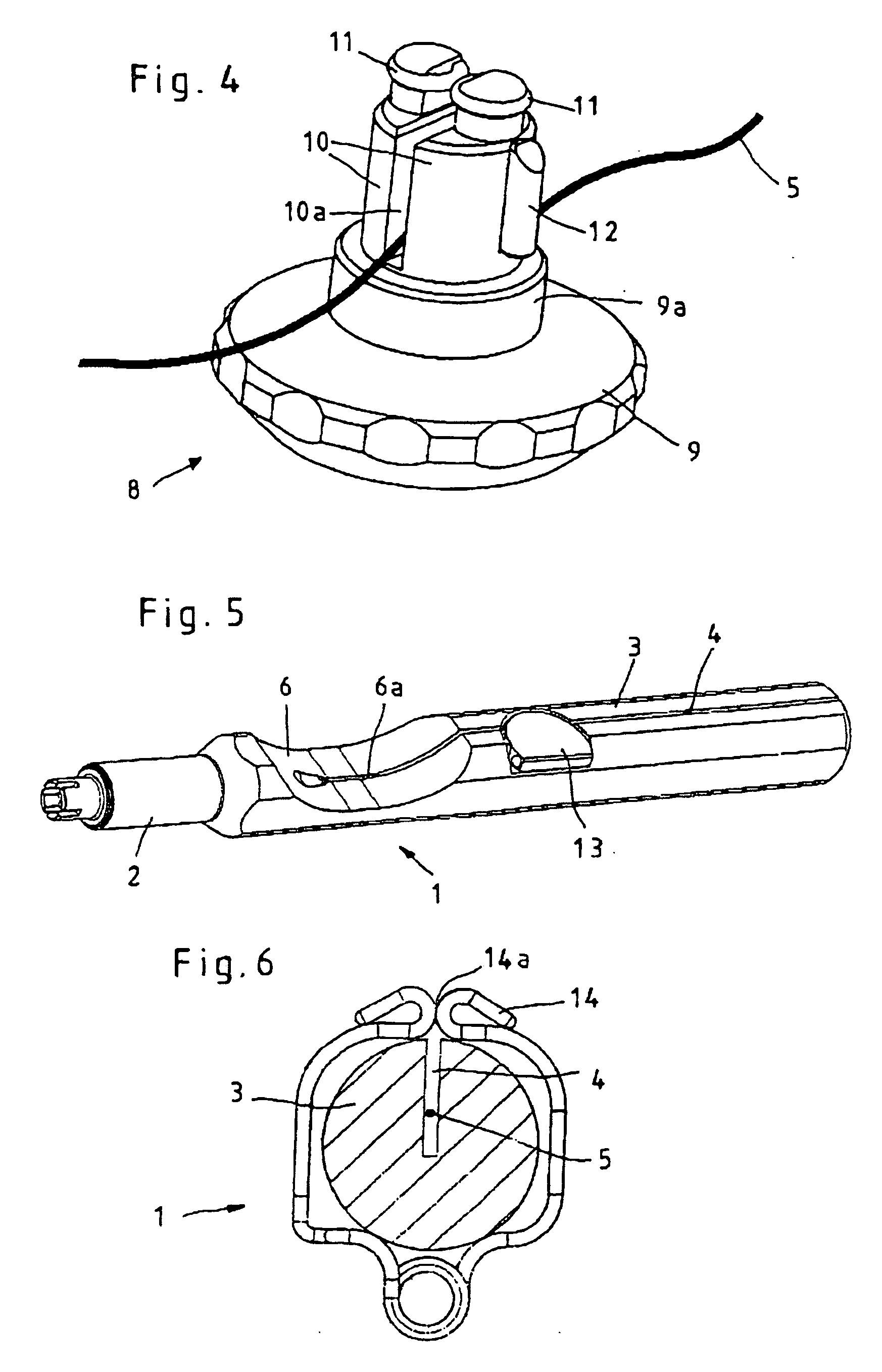Device for guiding surgical sewing material to a needle
a sewing material and needle technology, applied in the field of needle guiding devices, can solve the problems of sewing material pushing forward toward the needle, large transport devices, and difficult to control, and achieve the effect of preventing kinks in sewing materials
- Summary
- Abstract
- Description
- Claims
- Application Information
AI Technical Summary
Benefits of technology
Problems solved by technology
Method used
Image
Examples
first embodiment
[0031] In the first embodiment shown in FIGS. 1 to 4, this locking of the guide channel4 is performed by two locking elements 8 positioned in the guide channel 4, by means of which elements the sewing material 5 can be held on the guide channel 4. As can be seen in particular from FIGS. 2 and 4, the locking elements 8 are configured as threaded bolts that can screw into the gripping portion 3 of the shaft 1 from the side opposite the opening of the guide channel 4. The threaded bolt that forms the locking element 8 consists here essentially of a base body 9 equipped with an outer thread 9a as well as a shaft 10 that is positioned so that it can rotate freely on the base body 9 and that is divided into two shaft shanks by a vertical groove 10a corresponding to the guide channel 4.
[0032] The sewing material 5 is actually retained in the guide channel 4 or in the groove 10a of the shaft 10 by means of blocking elements 11 positioned on the free ends of the shaft shanks, which blocking ...
second embodiment
[0035] illustrated in FIG. 5, this locking element is configured as a covering lid 13 rotatably mounted on the gripping portion 3. To insert the sewing material 5 into the guide channel 4, the covering lid 13 is flipped open and the sewing material 5 is inserted from above into the guide channel 4. During operation the covering flap 13 is held in the locked position by the user's hand, which grips around the shaft 1 of the device, so that any unintentional protrusion of the sewing material 5 out of the guide channel 4 is prevented. According to an alternative embodiment the covering lid 13 can also be configured in such a way that it is pre-weighted by a spring element in the closing direction so that the covering lid 13 is configured as a self-securing snapping device.
third embodiment
[0036] In the third embodiment, illustrated in FIG. 6, the covering of the guide channel 4 is ensured by a clamp 14 that can be secured on the gripping portion 3 and surrounds it and, as illustrated, can be configured as a spring element. Alternatively to the configuration as a clamp 14, it is possible to configure the covering as a sleeve that is essentially form-fitted and can slide onto the gripping portion 3. The clamp 14 or the sleeve, after insertion of the sewing material 5 into the guide channel 4, is mounted on the gripping portion 3 of the shaft 1 in order to lock the guide channel 4 on its surface and to prevent unintentional protrusion of the sewing material 5 out of the guide channel 4. In the case of the clamp 14, however, it is also possible to apply it on the gripping portion 3 of the shaft 1 before the insertion of the sewing material 5 into the guide channel 4 and to guide the sewing material 5 into the guide channel 4 through an opening 14a of the clamp 14 positio...
PUM
 Login to View More
Login to View More Abstract
Description
Claims
Application Information
 Login to View More
Login to View More - R&D
- Intellectual Property
- Life Sciences
- Materials
- Tech Scout
- Unparalleled Data Quality
- Higher Quality Content
- 60% Fewer Hallucinations
Browse by: Latest US Patents, China's latest patents, Technical Efficacy Thesaurus, Application Domain, Technology Topic, Popular Technical Reports.
© 2025 PatSnap. All rights reserved.Legal|Privacy policy|Modern Slavery Act Transparency Statement|Sitemap|About US| Contact US: help@patsnap.com



